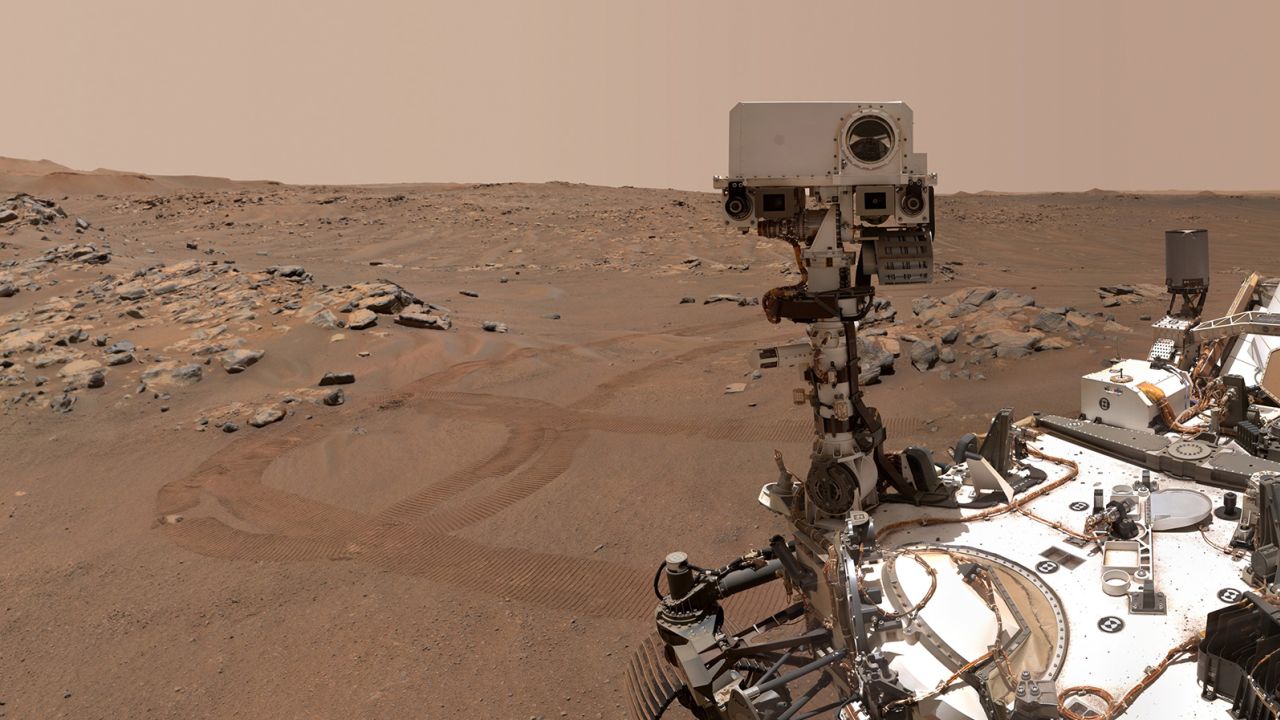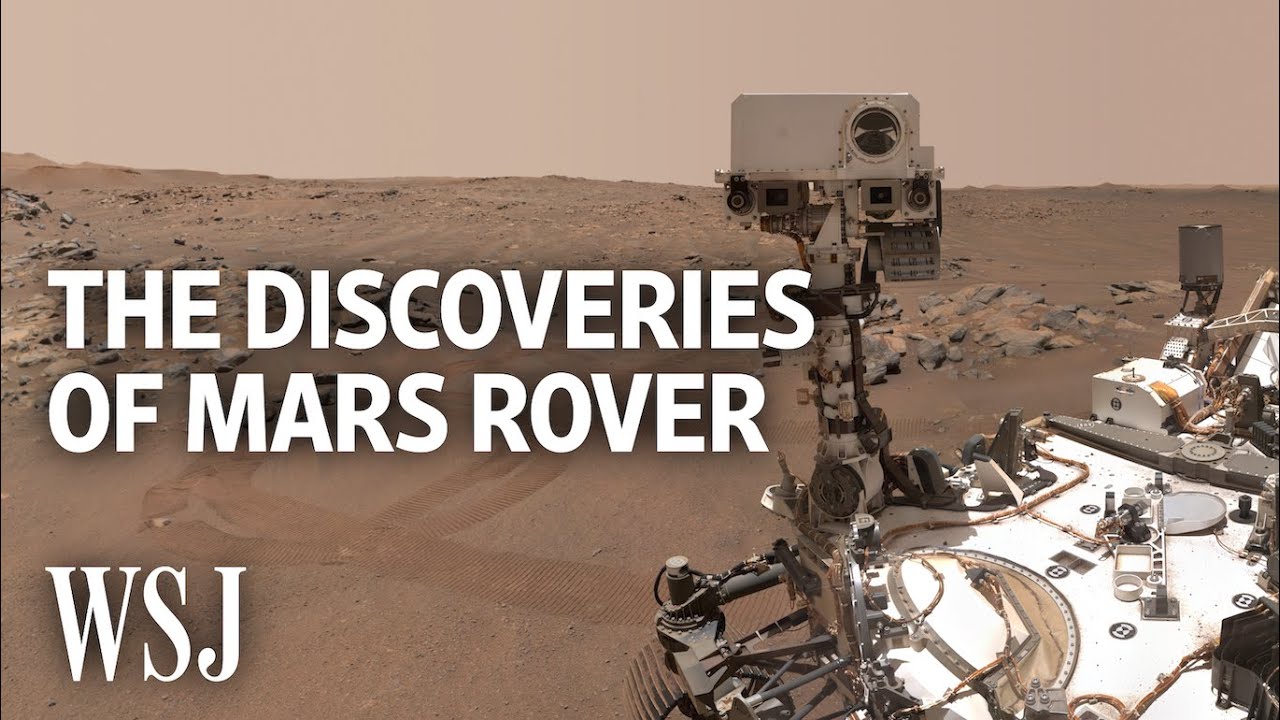The Perseverance Rover Is About To Set A New Record On Mars
A priceless payload is ready to be released by NASA's Perseverance rover. The car-sized Perseverance rover landed within Mars' Jezero Crater in February 2021, and since then it has been gathering samples of Martian rock, soil, and air.
Author:Suleman ShahReviewer:Han JuDec 18, 2022177 Shares2.6K Views

A priceless payload is ready to be released by NASA's Perseverance rover. The car-sized Perseverance rover landed within Mars' Jezero Crater in February 2021, and since then it has been gathering samples of Martian rock, soil, and air. All being as planned, the stuff will be brought back to Earth by a combined NASA-European Space Agency (ESA) effort as soon as 2033.
NASA officials said Friday that the rover is likely to hit a major milestone in the sample-return endeavor by beginning the construction of its first Mars sample store in the coming days. On December 11, the recovered Artemis I spacecraft splashed down to Earth. Scientists and technicians are already poring through Orion data in anticipation of Artemis II's first manned voyage in 2024.
In the meanwhile, the most recent pictures and data from the Double Asteroid Redirection Test in September are available. The permanent mark DART made on the asteroid Dimorphos is now plain to see. Perseverance, meanwhile, is gearing up to take its next major stride on Mars, and we can't wait to see where it goes.

What NASA’s Perseverance Rover Has Learned After 10 Months on Mars | WSJ
Extraterrestrial Perseverance
The wheels of perseverance aren't stopping to collect any dirt. The rover has just deposited a collection of rock and dust samples on the surface of Mars in preparation for constructing the first depot on another globe.
These samples are identical to those that will stay in the rover's storage; any one of these two troves may be the one that is brought back to Earth in 2033 via the Mars Sample Return mission. In addition, the rover is planning a route up the steep slope of an old river delta, where it will begin analyzing the interesting material in February.
In 2021, when the Perseverance rover explored Mars's Jezero Crater, a massive dust storm swept directly over it. The robotic explorer's microphone was on at the moment, and this week, the chilling recording of it was made public.
Perseverance Rover Drops Rock Cores
The Perseverance rover may begin dumping 10 test-tube-sized cores of rock and soil into Jezero Crater, Mars, next week. Since landing at Jezero in February 2021, Perseverance has collected several interesting core samples. NASA and the ESA will dispatch another spacecraft to retrieve the samples and return them to Earth in a decade.
The first Mars sample return begins with core depositing. “We're coming up on this very important and exciting milestone,” says Meenakshi Wadhwa, NASA's Mars sample return lead scientist and planetary scientist at Arizona State University in Tempe.
As it explores Jezero, Perseverance drills and stores rock samples in her belly. By depositing part of them in a NASA sample depot, it will construct a stockpile of backup samples in case anything goes wrong. “It assures that a scientifically high-value sample collection will be accessible for Earth return,” Wadhwa stated at an American Geophysical Union newsevent on 16 December.
Perseverance will place the tubes at the foot of an old river delta in Jezero, on a flat spot called Three Forks, where future spaceships may land. The 10 tubes include three sedimentary rock samples from the delta, which experts believe will provide the highest possibility of discovering Martian life. Slow-flowing delta sediments sometimes contain microbial life.
Four crater-floor samples of igneous rocks - volcanically produced rocks - will enable researchers on Earth to establish the absolute age of materials from a specific spot on Mars. One Martian soil sample, one atmospheric sample, and one "witness tube" to detect Earth impurities will complete the collection.
Perseverance Rover Performance Is Excellent
Jezero was selected as the location for Perseverance because it housed a large lake and a river delta billions of years ago. The rover is searching for fossils and other relics of Martian life in the rocks of Jezero, in addition to collecting samples.
The tenacity shown in collecting these 18 samples so far is admirable (opens in new tab). There are 16 tubes total; 15 of them have drilled-out cores from fascinating target rocks, 2 hold regolith (soil and gravel), and 1 has Martian air. The target rock was too crumbly, therefore this "atmospheric sample" is the outcome of Perseverance's first sampling attempt.
The rover crew takes two core samples from each target rock. One set will remain on board while the other is dropped off at depots like the one proposed for Three Forks.
According to the current plan for returning samples from Mars, the samples will be transferred from Perseverance to a NASA lander equipped with an onboard rocket. The sample container will be captured by an ESA spacecraft far above Mars and brought back to Earth.
However, the launch of the lander, Mars rocket, and ESA orbiter is not expected until 2027–2028. While the six-wheeled robot Perseverance is now in excellent condition, there is no assurance that it will still be functional by the time the sample-return hardware reaches Mars. As a result, the mission team devised a backup delivery plan including the Three Forks depot.
Two miniature helicopters, like the one that accompanied Perseverance to Mars and is now acting as a scout for the rover, will be aboard the sample-return lander. If the rover isn't up to the task, those future rotorcraft will transport Perseverance's samples from the depot back to the lander.
Due to the limited capacity of the sample-retrieval helicopters, Perseverance's depot drop must be organized in such a way that only one tube is dropped at a time.
Final Words
While the six-wheeled robot Perseverance is now in excellent condition, there is no assurance that it will still be functional by the time the sample-return hardware reaches Mars. As a result, the mission team devised a backup delivery plan including the Three Forks depot.
Two miniature helicopters, like the one that accompanied Perseverance to Mars and is now acting as a scout for the rover, will be aboard the sample-return lander. If the rover isn't up to the task, those future rotorcraft will transport Perseverance's samples from the depot back to the lander.

Suleman Shah
Author
Suleman Shah is a researcher and freelance writer. As a researcher, he has worked with MNS University of Agriculture, Multan (Pakistan) and Texas A & M University (USA). He regularly writes science articles and blogs for science news website immersse.com and open access publishers OA Publishing London and Scientific Times. He loves to keep himself updated on scientific developments and convert these developments into everyday language to update the readers about the developments in the scientific era. His primary research focus is Plant sciences, and he contributed to this field by publishing his research in scientific journals and presenting his work at many Conferences.
Shah graduated from the University of Agriculture Faisalabad (Pakistan) and started his professional carrier with Jaffer Agro Services and later with the Agriculture Department of the Government of Pakistan. His research interest compelled and attracted him to proceed with his carrier in Plant sciences research. So, he started his Ph.D. in Soil Science at MNS University of Agriculture Multan (Pakistan). Later, he started working as a visiting scholar with Texas A&M University (USA).
Shah’s experience with big Open Excess publishers like Springers, Frontiers, MDPI, etc., testified to his belief in Open Access as a barrier-removing mechanism between researchers and the readers of their research. Shah believes that Open Access is revolutionizing the publication process and benefitting research in all fields.

Han Ju
Reviewer
Hello! I'm Han Ju, the heart behind World Wide Journals. My life is a unique tapestry woven from the threads of news, spirituality, and science, enriched by melodies from my guitar. Raised amidst tales of the ancient and the arcane, I developed a keen eye for the stories that truly matter. Through my work, I seek to bridge the seen with the unseen, marrying the rigor of science with the depth of spirituality.
Each article at World Wide Journals is a piece of this ongoing quest, blending analysis with personal reflection. Whether exploring quantum frontiers or strumming chords under the stars, my aim is to inspire and provoke thought, inviting you into a world where every discovery is a note in the grand symphony of existence.
Welcome aboard this journey of insight and exploration, where curiosity leads and music guides.
Latest Articles
Popular Articles